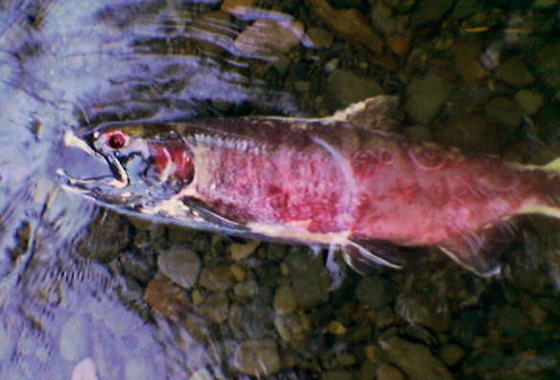Summary
One common motivation for preserving nature in spite of the suffering it contains is the sense that it's beautiful and hence needs to remain intact. This sort of "beauty-driven morality" seems quite strong in several domains of ethical thought for certain people.
Epigraph
"the prospect held out by some utilitarians of eliminating natural predators from the wild, should it turn out that by doing so we would achieve less pain in the world, seems truly bizarre. McMahan (2010), for one, ponders such a scenario. (And yet, I must admit that all that really stands in my own way of accepting such a suggestion is a romantic view of the natural world—a picture in my own mind that I simply find attractive.)" --Joel Marks, Ethics without Morals
Moral intuitions
In a waiting room on 14 Oct. 2013, I talked with someone I met about suffering by animals in nature. His reply was that suffering isn't really bad, and because nature is beautifully complex and intricate, we should try to keep it the way it is as much as possible. I've gotten this reaction many times, including from several close friends. For these people, nature's aesthetic appeal outweighs all the suffering of the individual insects and minnows that have to live through it.

Jonathan Haidt's Moral Foundations Theory describes five principal values that seem to underlie many moral intuitions:
- Care/harm
- Fairness/cheating
- Loyalty/betrayal
- Authority/subversion
- Sanctity/degradation.
The last of these is partly driven by feelings of disgust, which seem to move from the visceral realm to the moral realm in some people by acquiring a higher sense of "absolute wrongness." A classic example is a thought experiment involving completely safe and harmless sex between a sister and brother. Some people say, "I can't explain why, but it's just wrong."
It seems there's a reverse side of disgust-driven morality, one which probably has much more sway over more liberal-minded types. It's what I'm calling "beauty-driven morality," and it's slightly different from Haidt's "moral elevation" concept. In beauty-driven morality, outcomes are evaluated based on how aesthetically pleasing, complex, amazing, and sublime they seem to the observer. So, for example, the intricacies of ecosystem dynamics—complete with brutal predation and Malthusian mass deaths shortly after birth—are seen as so elegant, such a wonderfully harmonious balance, that to replace them with anything more bland, sterile, or civilized would be morally tragic.
Beauty vs. care/harm
Our sense of beauty and awe is part of a reward system designed to encourage exploration and discovery. Identifying patterns, figuring things out, and otherwise tickling our aesthetic intellectual senses makes us feel good. In those with beauty-driven moral intuitions, this feel-good emotion seems to be not just a personal experience, like the pleasant taste of chocolate, but also a morally laden experience: The sense that "this is right; this is how the world should be."
Of course, care/harm-based morality is fundamentally very similar. Our brains feel reward upon helping others and punishment upon seeing others in pain, and we regard this not just as a private emotion but a reflection on how the world should be, i.e., it should contain more helping and less suffering.

A pure care/harm moralist like myself can tell the beauty-based moralist: "You don't understand. Beauty is just a reaction you have to imagining something. It doesn't mean we should actually work toward the scenario you picture as beautiful. The real deep importance of acting morally comes from improving the subjective experiences of other beings." The beauty-based moralist can reply: "No, you don't understand how transcendent this higher beauty is. It's so fundamentally important that it's worth many beings suffering to bring it about. This is where the deepest moral purpose lies."
Of course, I don't agree with the beauty-based moralist, but this fundamentally comes down to a difference in our brain wiring. Similarly, I can't talk a paperclip maximizer out of pursuing its metallic purpose in life. The paperclip maximizer tells us: "No, you both don't understand. The ineffably profound value of paperclips rises far above both of your petty concerns. I hope one day you see the shiny truth."
That said, there is more room to change the minds of beauty-based moralists than paperclip maximizers insofar as the former are humans who also tend to have care/harm intuitions. The aesthetic approach makes most sense from a "far mode" perspective—looking at whole ecosystems or inter-agent evolutionary dynamics on large time scales—but if you see in a near-mode way this particular gazelle having its intestines ripped out while still conscious, even the aesthetics of the situation may seem different, and if not, hopefully care/harm sentiments can enter in.
Since beauty-based morality presumably originates from aesthetic reward circuits, we would predict that people with more of these circuits (artists, poets, mathematicians, physicists, etc.?) would, ceteris paribus, tend to care more about making the future beautiful than average.
Tolerance for other values
As a postscript, I should add that even if we don't agree with beauty-driven morality, there are good strategic reasons to compromise with people who do subscribe to it. In addition, if we're preference utilitarians, we may place intrinsic weight on agents' desires for beauty or paperclips. In general, we should strive for a society in which other values are respected and in which we do cheap things to help other values, even if we don't care about them ourselves.
Feedback
For reader comments on this piece, see the original blog post.